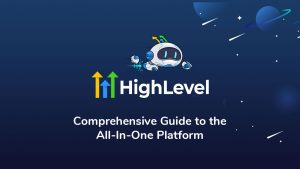Understanding the psychology of digital marketing is essential to creating successful marketing strategies in the digital age. With the rise of social media and similar platforms, marketers can access more data and insights more easily than ever. However, it takes more than just analyzing numbers to create effective campaigns that actually work.
To effectively reach consumers, marketers need to understand the psychological factors influencing their decision-making process. These factors include social influence, cognitive biases, and emotional marketing, and they play a significant role in shaping consumer behavior online. Research shows that emotions significantly impact purchasing decisions, with 95% of consumers being influenced solely by them. This makes emotional marketing a highly effective tool for marketers.
By studying consumer psychology, marketing professionals can unlock new opportunities for growth and engagement. This article explores the fascinating world of digital marketing and psychology. It explains why understanding consumer behavior is critical to success in today’s competitive digital landscape and how you can get there as a marketer.
Digital Marketing and Social Influence
In the modern age of technology, digital marketing and social influence are two related but distinct concepts that play significant roles in shaping consumer behavior. Digital marketing involves utilizing various digital channels, while social influence refers to the impact of social media on consumer decision-making.
These digital channels include:
- Social media
- Search engines
- Websites
Various mediums can be used to promote and sell products or services and reach a diverse audience. However, coupling those mediums with Social influence can impact opinions, attitudes, and behaviors in an individual’s decision-making process to almost two-fold.
It’s no secret that social media’s rise in recent years has transformed how businesses approach digital marketing. Social media platforms provide an opportunity for brands to connect with consumers and build relationships on a more personal level. Through social media, companies can create content that resonates with their target audience and leverage social influence to amplify their message.
Social influence is crucial in shaping people’s perceptions of brands and products. When a brand is recommended by someone they trust or admire, consumers are more likely to trust and follow it. This is particularly important in the digital realm, as it can help businesses establish credibility and build a loyal following.
The importance of digital marketing and social influence in today’s world cannot be overstated. With most consumers spending significant time online, brands must have a solid digital presence to remain competitive. Businesses can succeed by leveraging social influence and understanding the psychological factors influencing consumer behavior.
The Power of Emotional Marketing
Marketing is based on the idea that people make buying decisions based on feelings rather than logic or reason. Businesses can build stronger customer relationships and increase brand loyalty by creating an emotional connection with a brand.
Effective emotional marketing is crucial for businesses to create impactful campaigns that connect with their target audience. By tapping into consumers’ emotions, brands can make a lasting impression that fosters customer loyalty and encourages word-of-mouth recommendations. It’s also an effective way for businesses to differentiate themselves from competitors in a crowded market.
One of the most significant benefits of emotional marketing is its ability to drive engagement and increase conversions. When people feel emotionally connected to a brand, they are more likely to take action, such as purchasing or sharing content on social media. Research has shown that emotional ads are twice as likely to generate long-term customer loyalty as those with only rational content.
Consumers are constantly bombarded with information and advertisements; emotional marketing can be a powerful tool for businesses to cut through the noise. Companies can create campaigns that capture attention and inspire action by tapping into the emotions that drive consumer behavior.
Consumer Behavior in Digital Marketing
Consumer behavior refers to consumers’ actions and decisions when purchasing products or services. It encompasses many factors, including personal preferences, social influences, and psychological factors. Understanding consumer behavior is crucial for marketers because it helps them create effective marketing strategies that resonate with their target audience.
Here are some key reasons why marketers need to know and adjust to consumer behavior:
- Develop targeted marketing strategies: By understanding consumer behavior, marketers can segment their target audience and develop targeted marketing strategies for each segment. For example, suppose a marketer knows that a particular demographic prefers social media as their primary source of information. In that case, they can develop a social media marketing campaign to reach that audience.
- Create personalized experiences: Personalization has become increasingly important in marketing, and understanding consumer behavior is critical for creating personalized experiences. Marketers can tailor messaging and offers that resonates with individual consumers by knowing what motivates and influences their target audience.
- Anticipate changes in the market: Consumer behavior is not static and can change over time. By monitoring changes in consumer behavior, marketers can anticipate changes in the market and adapt their marketing strategies accordingly. For example, if there is a shift towards more sustainable products, marketers can adjust their messaging to align with this trend.
- Improve customer satisfaction: Understanding consumer behavior can help marketers improve customer satisfaction by identifying pain points and addressing customer needs. Businesses can improve customer loyalty and retention by creating marketing campaigns that address these concerns.
Marketers must create marketing strategies connecting with their target audience to achieve growth and engagement. Their strategy can be successful through segmentation, personalization, anticipating market changes, and enhancing customer satisfaction.
Conclusion
In conclusion, the psychology of digital marketing is critical to any successful marketing strategy in today’s digital age. Understanding consumer behavior and the psychological factors influencing decision-making can help marketers create campaigns that resonate with their target audience and drive growth and engagement.
To succeed in online marketing, understanding consumer behavior is crucial. Emotional marketing is a potent tactic for boosting conversions and customer loyalty.
It’s essential to approach cognitive biases and social influence ethically and transparently to avoid manipulating consumers’ behavior unfairly. Marketers can create successful marketing campaigns by utilizing these tools ethically and responsibly. So the next question is, what are you waiting for?
Frequently Asked Questions
What Is the Number One Rule of Marketing?
The one rule of marketing is to understand and meet the needs of your target audience. This means that before you can effectively promote and sell a product or service, you must first understand your target market’s needs, wants, and pain points.
To do this, businesses should conduct thorough market research, including customer surveys, focus groups, and competitor analysis. By gathering data on what their target audience is looking for and what they value, businesses can create more effective marketing campaigns that speak directly to their customers’ needs.
Once you deeply understand your target audience, you can tailor your marketing messages and strategies to resonate with them and address their specific pain points. This can help build trust and credibility with your audience, ultimately leading to increased sales and brand loyalty.
What Are the Five A’s of Digital Marketing?
Utilizing digital marketing can be a powerful tool for businesses to reach their target audiences and increase sales. One of the most effective ways to achieve this is by implementing the Five A’s of digital marketing, which includes Audience, Assets, Access, Attribution, and Automation.
- Audience refers to the people you are trying to reach with your digital marketing efforts. Identifying your target audience and creating content that speaks directly to them is important.
- Assets refer to the content you create for your digital marketing campaigns. This could include videos, blog posts, images, infographics, etc. Creating high-quality assets that will engage your target audience and encourage them to take action is essential.
- Assets refer to the content you create for your digital marketing campaigns. This could include videos, blog posts, images, infographics, etc. Creating high-quality assets that will engage your target audience and encourage them to take action is important.
- Access refers to how easily people can access your content. You should ensure that your website or social media channels are optimized for mobile devices so people can access it from any device they have.
- Attribution refers to tracking your campaigns’ success in terms of conversions or leads generated. This allows you to measure the success of each campaign and adjust accordingly if needed.
What Is the Golden Triangle Rule in Digital Marketing?
The Golden Triangle Rule of digital marketing is a concept that describes the importance of the top left-hand corner of a search engine results page (SERP) in terms of user engagement.
According to this rule, the top left-hand corner of the SERP is the most valuable real estate on the page and the area where users are most likely to engage with organic search results. This area is often referred to as the “golden triangle” because it is shaped like a triangle.
Several studies have shown that users tend to focus their attention on the top left-hand corner of the SERP when searching for information. Eye-tracking studies have also shown that users tend to scan search results in an F-shaped pattern, starting at the top left-hand corner and moving across the page.
Therefore, businesses must aim for high organic search rankings and strive to appear in the top left-hand corner of the SERP to maximize user engagement and drive traffic to their website.







